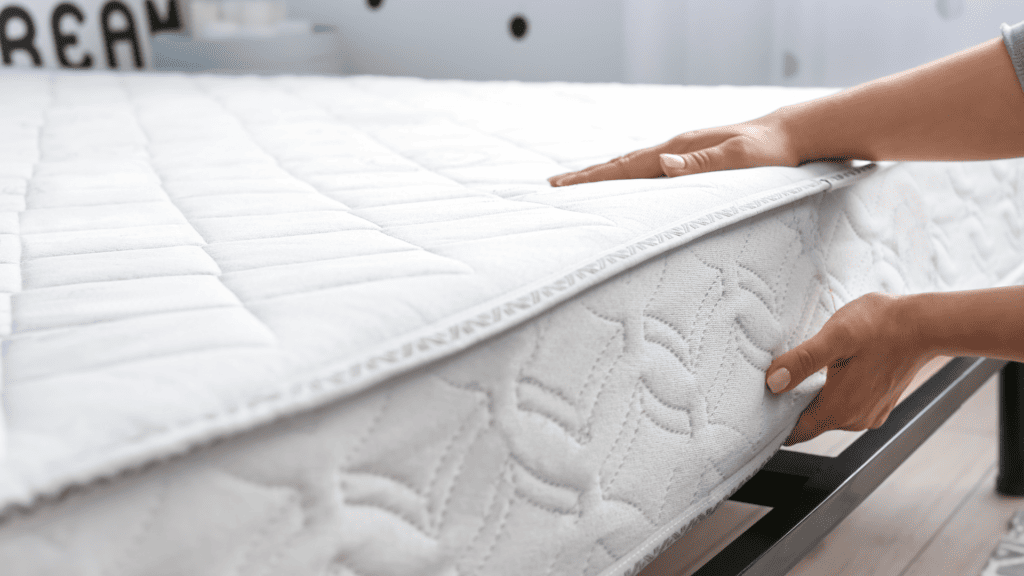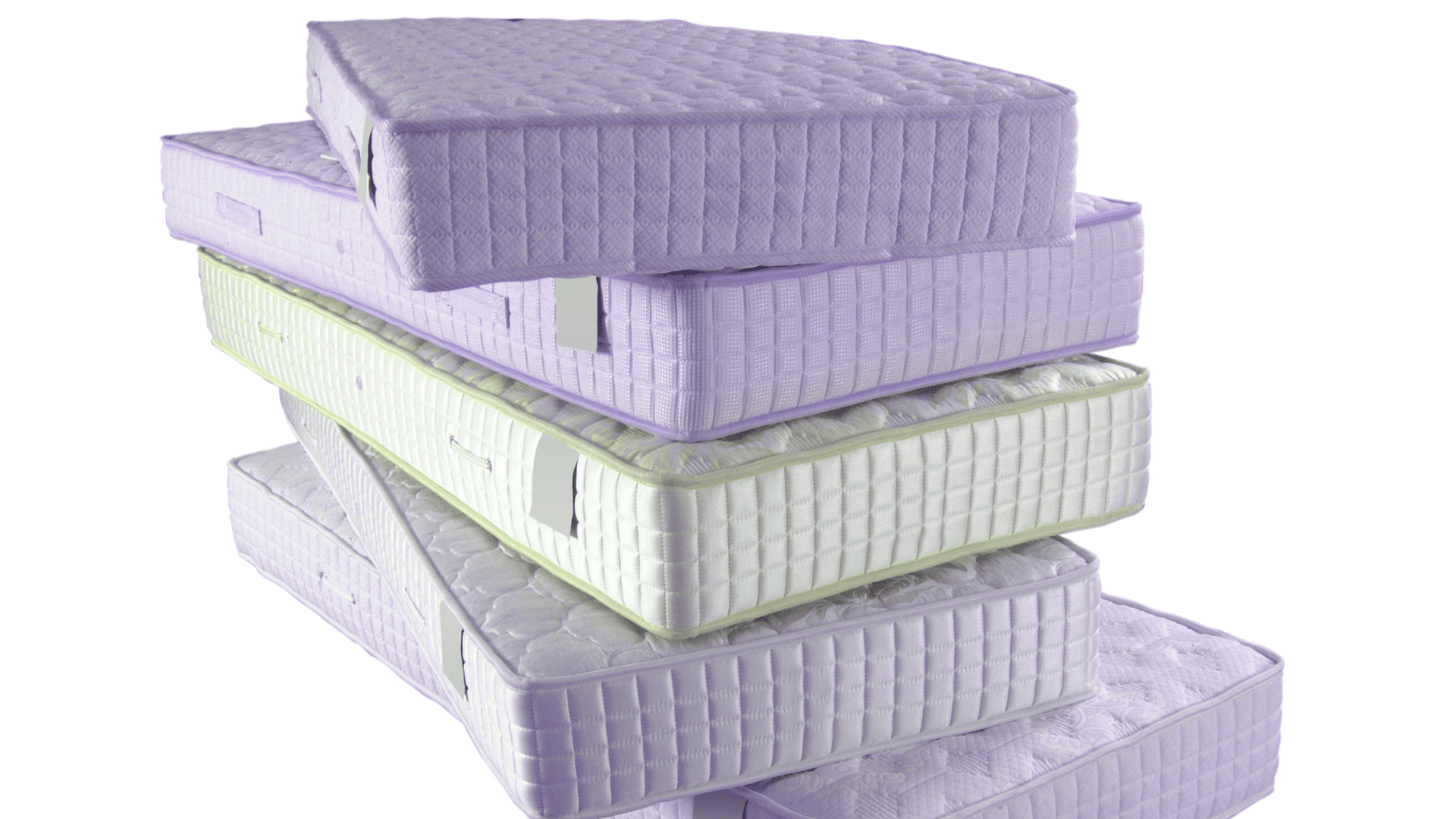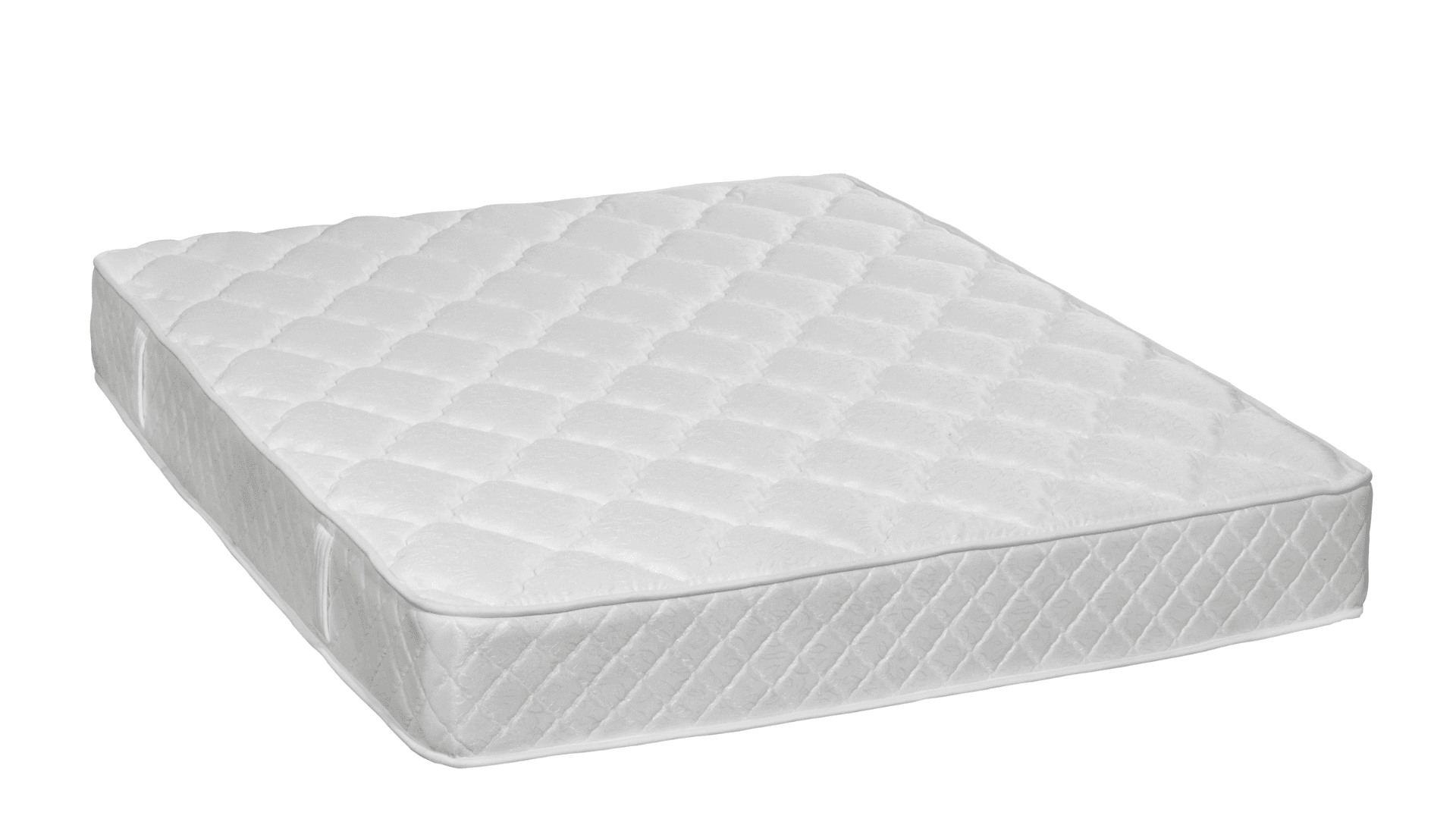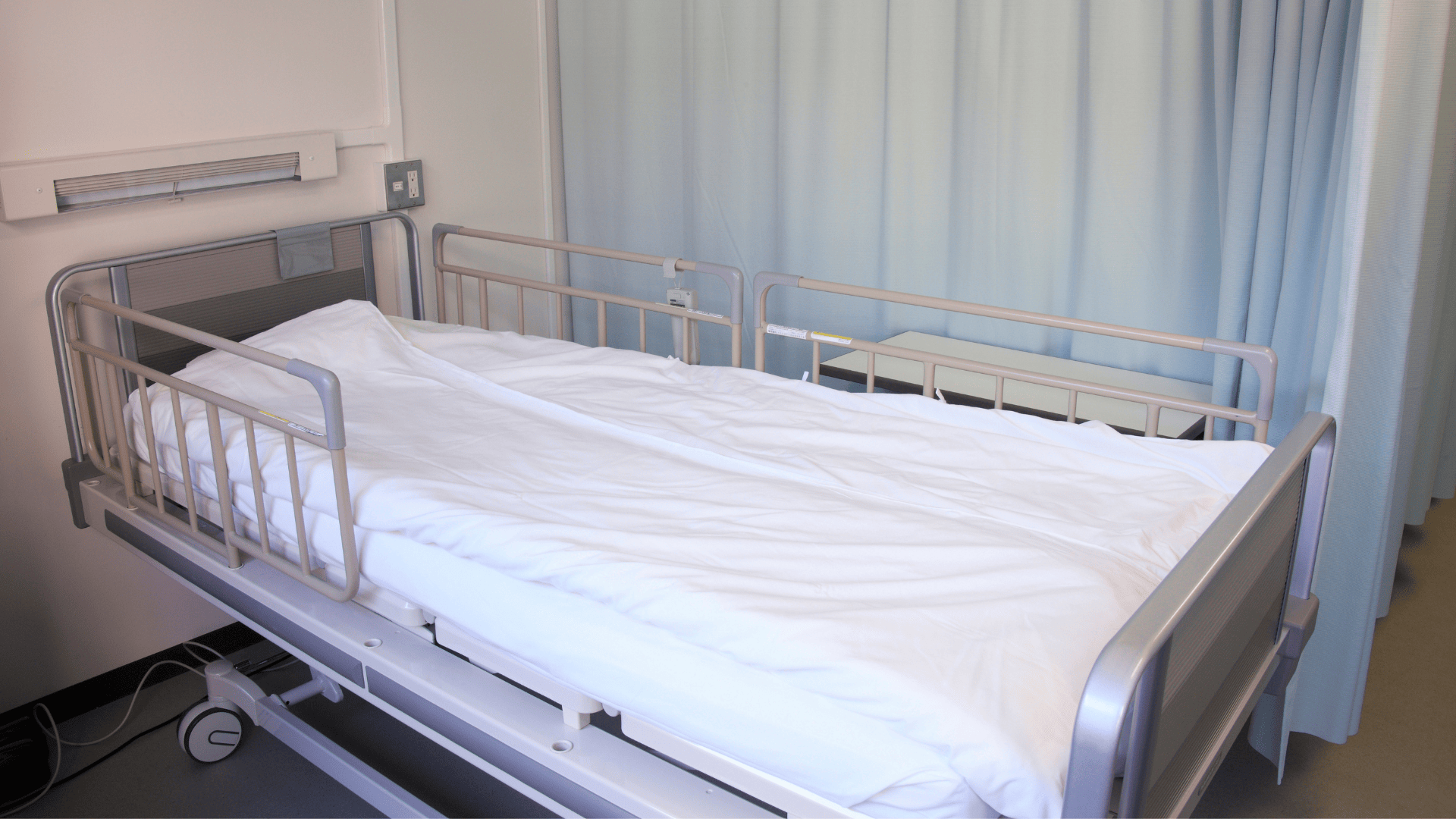Hospital beds are not the same as standard beds because of their adjustable frames and mattresses. When compared to an ordinary twin bed, which is 38 inches wide, a hospital bed is noticeably thinner at 36 inches. Rails, trapeze bars, and IV poles are just some hospital-specific accessories that can be mounted to a hospital bed frame.
It is important to check the dimensions of the mattress and the bed frame before attempting to use a conventional mattress on a hospital bed. A mattress that is too narrow can shift around and become a safety hazard, while a mattress that is too wide can restrict the use of the bed. Consider adding padding or support to the mattress to ensure the patient is comfortable and supported.
In this blog post, we'll discuss the variations between standard mattresses and those made specifically for hospital beds, the risks associated with using them, and the options available to make sure patients are as comfortable as possible.
What Is The Difference Between A Hospital Bed Mattress And A Regular Mattress?
There is a significant difference between the mattresses used on hospital beds and those used on regular beds, but both have advantages.
1. Hospital Bed Mattress
Only a few people know that there is more than one option for hospital bed mattresses. This is because most people's mental image of a hospital bed mattress is of a generic, uniform model. On the other hand, just as there are a variety of hospital beds, patient lifts, and other medical equipment, there are also a wide variety of mattresses that can be used on hospital beds.
There are a variety of mattress options for hospital beds. Some mattresses, for instance, are intended to provide varying degrees of pressure so that the user is never in the same position for too long. Those concerned with pressure sores and other forms of discomfort will appreciate this feature.
In addition, they are typically constructed from machine-washable materials, which are useful for maintaining cleanliness and avoiding the spread of disease. Someone who will remain bedridden for a long time should take extra care to keep themselves clean.
A hospital mattress is the best option for your hospital bed at home. Standard mattresses have advantages, but you won't find the same features.
2. Regular Mattress
The mattresses we're used to at home are "regular mattresses," they typically feature memory foam, springs, and a plush fabric cover. Having a standard mattress does have its advantages.
A regular mattress will feel just as comfortable as it always has to whoever sleeps on it. When you're sick, nothing is better than resting in your bed. You probably already have a standard mattress; if you don't, they may be purchased for less than you might think.
On the other hand, normal mattresses are notoriously difficult to clean and lack any distinguishing qualities that would be useful to someone bedridden due to illness or injury. Whether or not a standard mattress can be used on a hospital bed still stands.
The Benefits Of Using A Regular Mattress On A Hospital Bed
The use of a regular mattress on a hospital bed carries with it some dangers, but it also has some potential advantages. Enhanced convenience is a key advantage.
Patients with chronic pain or mobility concerns may find the firm, supportive mattresses common in hospitals too painful to sleep on. The patient's quality of life may be enhanced by switching to a standard mattress because of the potential for a more restful night's sleep.
Another advantage is the possibility of financial savings by substituting a standard mattress for one on a hospital bed. Insurance may not cover the purchase of a new hospital mattress due to its high price tag. People without health insurance or limited funds may find it more practical to use a standard mattress instead.
The Dangers Of Using A Regular Mattress On A Hospital Bed
The primary concern is that putting a standard mattress on a hospital bed could put the patient at risk. Along with the mattress, hospital beds have built-in safety features like side rails and height adjustments to keep patients from falling or becoming trapped. These safeguards might be ineffective if a standard mattress were used on a hospital bed.
Additionally, patients who are immobile or bedridden may not receive adequate support and pressure relief from a standard mattress placed on a hospital bed. When patients spend long periods in bed, they typically develop pressure ulcers or bedsores; hospital mattresses are designed to alleviate this issue by distributing weight evenly. Regular mattresses won't provide enough support and could even make things worse.
Also, a standard mattress may not fit properly on a hospital bed. A standard mattress may not be a good fit for a hospital bed because of the former's unique dimensions and other needs. Because of this, the mattress may slide or shift, providing an unsafe or uncomfortable uneven surface for the patient.
Deciding To Use A Regular Bed Mattress On A Hospital Bed
Regular mattresses are not permitted on hospital beds. Many people find that their home mattresses cause painful pressure points since they do not provide the same level of support. This may exacerbate existing health issues or cause new ones. Having a good night's sleep is crucial to your physical and mental well-being.
Hospital Mattresses Improve Patient Mobility
Patients may have an easier time getting in and out of bed thanks to hospital mattresses. With a standard mattress, people with mobility challenges may have difficulty getting out of bed in the morning and back to sleep at night.
People with health and wellness difficulties often find that having a hospital bed in their bedroom makes everything easier. When it's time to get out of bed in the morning, a lack of support from the mattress can make it difficult for the user to do so.
High-density foam, which is flexible and more durable, is used in the construction of most hospital mattresses. They will serve the patient well and last for a longer period of time.
Hospital Bed Mattresses Are Designed For Health
Bedsores or pressure ulcers can develop on the elbows, lower back, shoulders, and heels of a patient who stays in one position for too long. Once these wounds appear, mending them can be difficult, expensive, and time-consuming, which slows down the entire healing process. These issues are unpleasant for the patient, time-consuming for the carer, and even life-threatening if an infection sets in.
Mattresses on hospital beds are designed to support their users and evenly distribute their weight to prevent pressure sores. Bedridden patients, especially the underweight ones with between their bones and the mattress, there is less fat and muscle, need this function to prevent painful but sometimes fatal bed sores from forming. Patients who spend more than 12 hours in bed every day would benefit greatly from the increased durability and pressure relief provided by memory foam hospital mattresses.
The mattresses also improve air circulation all over the body. Bedsores form when the skin is unable to receive adequate ventilation. Overheating might increase the risk of sores in patients who are overweight. Resting on a mattress that allows air to circulate can lessen their chances of developing bed sores.
Hospital Mattresses Are Specialised, Not Conventional
The hospital mattress you buy definitely won't fit on the hospital bed because the frame is designed for a specific size mattress. A Twin XL mattress, measuring 39 inches wide and 80 inches long, is the standard size for hospital beds. Standard mattress dimensions, such as those for a twin bed (usually 39 by 75 inches), do not conform to these specifications.
Extra inches of mattress width will interfere with the bed's mechanism, preventing it from functioning at peak efficiency and perhaps causing damage to the bed's complicated pieces. If the mattress is the wrong width or length, the patient's safety elements, such as side rails, may not work as intended, putting the patient in danger.
Typical mattresses, with their springs and dense foam, do not work with the electric inclination controls at the head and knees. The mattress of a hospital bed typically folds along with the bed's adjustments, allowing the patient to choose the most comfortable position for them at any given time. An ordinary innerspring mattress is built to be firm, so it won't give the patient the benefits of a hospital bed and will make adjusting the frame more difficult.
Which Mattress Should You Use In A Hospital Bed?
Here are some features to look for when purchasing a hospital bed mattress. It will simplify your life significantly.
These characteristics are chosen with the patient's well-being and ease of recovery in mind.
Get A Mattress With Lateral Rotation
Patients in the hospital often find themselves unable to even shift positions in their beds. If they stay in one position for too long, they risk getting bed sores and blisters. Their illness will deteriorate, and they will experience more pain.
You should acquire a lateral rotation mattress if you have similar problems. Because of their unique design, these mattresses make it easier for patients to switch positions. The patient will feel more at ease and comfortable when they may adjust their sleeping position. They won't overheat and risk getting blisters or bed sores.
Get A Mattress With Innersprings
The patient's condition is the primary factor in determining the appropriate mattress for a hospital bed. In particular, this is determined by the anticipated length of the hospital stay.
A patient who will only be in the hospital bed for a limited time should sleep on an innerspring mattress. This is because, in many ways, an innerspring mattress is equivalent to the mattress you already have at home. These innerspring mattresses are standard on most hospital beds because patients quickly adjust.
Get An Air Mattress With Pressure Relief
Remove the regular mattress immediately if the patient has acquired blisters and bedsores. The reason is that doing so will make things worse by increasing perspiration. An air mattress or other pressure-relieving alternative is advised in such a scenario. Specialists regulate the pressure the mattress applies to provide a soothing experience for the patient. The system works by inflating and deflating air cells to maintain a constant but fluctuating pressure. Patients won't overheat thanks to the pressure-relieving air mattresses' ability to distribute air evenly. In this way, patients' comfort is ensured, and pain is avoided.
Get A Mattress With Foam Prevention
Avoid using a regular mattress on a hospital bed if the patient will be there for an extended period of time. Bed sores and blisters will develop on their skin if they stay on a conventional bed for an extended period of time. As a result, they will continue to worsen and create new issues.
Therefore, if the patient is going to remain in the hospital bed for an extended period, we strongly suggest that you use a foam preventive mattress instead of a traditional one. The reason for this is that the foam prevention mattresses are purpose-built and produced in such a way as to safeguard the patient against developing blisters or bedsores.
What Is Special About Hospital Bed Mattresses?
Mattresses used in hospitals are one of a kind since they are made for the comfort of patients who will be in bed for long periods of time due to illness, accident, or recovery after surgery. There are many ways in which these specialised mattresses differ from standard mattresses.
Hospital bed mattresses are designed to alleviate pressure and support the body. Mattresses in hospitals are typically composed of foam, air, or gel and are specially intended to alleviate pressure points and prevent pressure ulcers. Some hospital mattresses include inflatable air or foam chambers that may be adjusted to the individual patient's weight and shape for optimal support and pressure relief.
Hospital mattresses are built with cleanliness and infection prevention in mind. To reduce the likelihood of the spread of infection in healthcare facilities, mattresses used there are constructed from simple materials to clean and disinfect. Waterproof covers, found on many hospital mattresses, prevent the spread of infection by containing and containing bodily fluids.
Hospital bed mattresses offer enhanced mobility features such as adjustable height and incline. These features allow patients to get in and out of bed more easily and can help reduce the risk of complications such as pressure sores, muscle atrophy, and blood clots.
Conclusion
Hospital beds are different from regular beds because their frames can be moved and their pillows are only 36 inches thick. Rails, trapeze bars, and IV poles can be attached to the bed frame of a hospital bed. Before putting a regular mattress on a hospital bed, it's important to check the size of the mattress and bed frame to avoid safety risks and limits on how the bed can be used.
A hospital bed cushion is the best choice for a hospital bed at home because it has the same features as a regular mattress but is harder to clean. But it can make life easier for people with constant pain or trouble moving around, which can improve their quality of life. Due to the high cost of a hospital bed, it may also save money.
The main worry is that putting a regular mattress on a hospital bed could be dangerous for the patient. There are safety features built into medical beds, like side rails and height adjustments, which may still work even if a regular mattress is put on the bed. Also, patients who can't move or are bedridden might not get enough support or relief from pressure from a normal mattress on a hospital bed.
Due to the size and other needs of a hospital bed, a normal mattress might not fit well on it. This can make the surface dangerous or uncomfortable for the patient.
People with trouble moving around have an easier time getting in and out of bed because hospital pillows make it easier for them to move around. Most hospital mattresses are made of high-density foam, which is flexible and sturdy. This helps the patient and makes the mattress last longer.
The mattresses on hospital beds are made to support patients and spread their weight properly so that they don't get pressure sores or ulcers. Patients who are bedridden and spend more than 12 hours a day in bed need these mattresses because they need more sturdiness and pressure relief. They also improve air flow, which is important because warmth can make sores more likely in overweight people.
Hospital pillows are not like regular mattresses; they are made for specific sizes of beds. The normal size for hospital beds is a Twin XL mattress. Extra inches of mattress width can get in the way of the bed's mechanism and could damage the bed's parts. Normal mattresses, which have springs and a lot of dense foam, don't work with electric tilt controls at the head and knees. This makes it harder to change the frame.
When buying a mattress for a hospital bed, look for features like lateral rotation, innersprings, pressure relaxation, and protection against foam. A lateral rotation mattress makes it easy for patients to change positions. This makes bed sores and boils less likely to happen. A pressure-relieving air mattress keeps the pressure steady by inflating and deflating air cells to keep the pressure even. For long stays in the hospital, foam mattresses are recommended to keep people from getting blisters or sores.
The mattresses on hospital beds are different because they are made to relieve pressure and support the body. Foam, air, and gel mattresses are made to relieve pressure points and avoid pressure ulcers. They are also made to be clean and avoid infections. They have waterproof covers that hold in bodily fluids. Also, hospital bed mattresses have features that make them easier to move around, like adjustable height and angle. These features make it easier for patients to get in and out of bed and lower the risk of problems like pressure sores, muscle atrophy, and blood clots.
Content Summary
- Hospital beds differ from standard beds due to their adjustable frames.
- A standard twin bed is 38 inches wide, while a hospital bed is 36 inches wide.
- Hospital beds can have rails, trapeze bars, and IV poles attached.
- It's vital to match the mattress and bed frame dimensions.
- A too-narrow mattress can become a safety hazard.
- A too wide mattress can hinder bed use.
- Mattress padding can increase patient comfort.
- Hospital and regular mattresses differ significantly.
- Hospital bed mattresses come in a variety.
- Some hospital mattresses vary the pressure to prevent prolonged static positions.
- Hospital mattresses aid in avoiding pressure sores.
- These mattresses are usually made of machine-washable materials.
- Cleanliness helps reduce disease spread.
- Regular mattresses commonly feature memory foam, springs, and plush covers.
- Standard mattresses can offer familiarity and comfort.
- Cleaning regular mattresses can be challenging.
- Using a standard mattress on a hospital bed has both risks and benefits.
- Standard mattresses might offer a more comfortable sleep for some.
- Standard mattresses can be more economical.
- Using a standard mattress on a hospital bed can compromise patient safety.
- Hospital mattresses distribute weight to prevent pressure ulcers.
- Regular mattresses might not fit hospital beds well.
- Many home mattresses do not offer adequate support on hospital beds.
- Proper sleep is vital for well-being.
- Hospital mattresses aid patient mobility.
- Standard mattresses may make mobility more challenging.
- Most hospital mattresses use high-density foam.
- Hospital mattresses prevent bedsores.
- Bedsores can be expensive and time-consuming to treat.
- Hospital mattresses ensure even weight distribution.
- Proper air circulation helps prevent bedsores.
- Hospital mattress dimensions are specific to hospital beds.
- Using the wrong mattress can compromise the bed's functionality.
- Regular mattresses don't typically work with hospital bed adjustments.
- Lateral rotation mattresses help patients change positions.
- Innerspring mattresses provide familiarity for short hospital stays.
- For bedsores, pressure-relieving air mattresses are recommended.
- Long-term hospital bed users should consider foam-prevention mattresses.
- Hospital mattresses are designed for extended bedridden periods.
- They differ significantly from regular mattresses.
- Hospital mattresses alleviate pressure and support the body.
- They are made from foam, air, or gel.
- They are designed to prevent pressure ulcers.
- Hospital mattresses offer adjustable support.
- Cleanliness is a priority in hospital mattress design.
- Waterproof covers on hospital mattresses prevent infection from spreading.
- Enhanced mobility features are present in hospital bed mattresses.
- Adjustable height and incline assist patients.
- These features reduce complications like pressure sores.
- Hospital mattresses aim for patient comfort and health protection.
FAQs About Hospital Bed Mattress
Consult with healthcare professionals, follow manufacturer recommendations, and consider the patient's preferences for the best choice.
Several reputable brands specialise in hospital bed mattresses. Research and choose a brand known for quality and safety.
Yes, there are mattresses designed specifically for hospital beds, which offer features like pressure ulcer prevention.
They are made with state-of-the-art memory foam for unmatched comfort! Unlike most consumer and medical-grade beds, which are made of materials such as foam, innerspring coils, air, or gel, mattresses are designed to provide the ultimate comfort.
Typically, hospital bed mattresses are made of waterproof and medical-grade fabric, which prevents pesky spills from getting into them. These beds are crafted from top-of-the-line materials and come with a free fluid-proof cover, so you'll feel safe knowing that any spills or moisture will bead right off.



